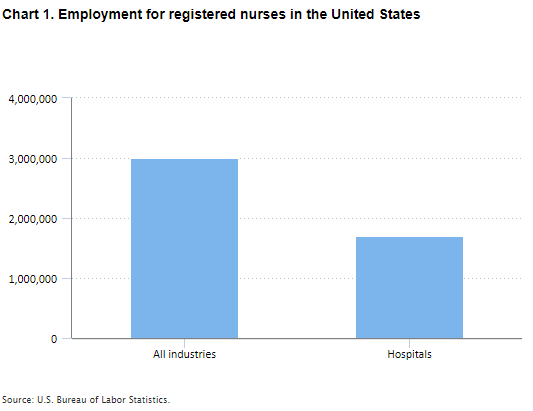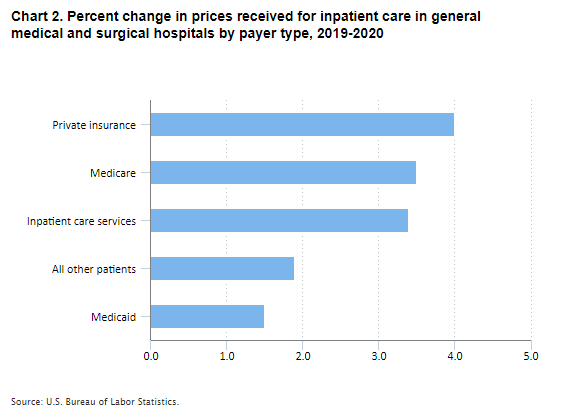An official website of the United States government
 United States Department of Labor
United States Department of Labor
Employment in healthcare and social assistance is projected to add the most jobs of all industry sectors: about 3.3 million jobs over the 2020–30 decade. Within healthcare, employment in hospitals is projected to increase by 7.9 percent, resulting in about 490,000 new jobs.
Healthcare occupations and those associated with healthcare (including mental health) account for 7 of the 30 projected fastest growing occupations from 2020 to 2030. Demand for healthcare services, both from aging baby boomers and from people with chronic conditions, is expected to drive employment growth.
About three-fourths of nonfatal work-related injuries and illnesses to RNs occur in hospitals. Nearly half of RN injuries and illnesses in hospitals are caused by overexertion and bodily reactions compared with about one-third in both ambulatory health care and nursing and residential care facilities.
Hospitals employ 58% of all registered nurses in the United States.

Women account for nearly half of total private-sector employment in the U.S., but they hold nearly 3 out of every 4 jobs in hospitals.
Hospitals account for 3 out of every 10 jobs in health care in 2019.
RNs are more likely than all occupations to require overhead reaching. Reaching overhead was required for 71.6 percent of RNs and 45.8 percent of all occupations.
The heaviest item RNs are required to lift weighs more on average than the heaviest item required by all occupations. The average weight lifted or carried by RNs was 42.33 pounds compared with 27.21 pounds for all occupations.
Medicare reimbursement rates are adjusted for changing labor costs and prices using BLS outputs: the Employment Cost Index and the Consumer Price Index.
The Social Security Administration plans to use the BLS’s Occupational Requirements Survey for disability benefit decisions.
Some of your patients may apply for disability benefits to use for income and/or medical insurance.
The Producer Price Index (PPI) publishes changes in the prices providers receive for the inpatient hospital services they provide by payer type.
PPI data show that while the prices general medical and surgical hospitals received for the inpatient care services they provided increased by 3.4% from 2019 to 2020, the increase differed by payer type.

Keeping workers safe: BLS data for occupational injury rates and days away from work can inform safety analysis.
About one-fourth of hospital workers who were injured on the job missed 31 or more days of work due to the injury.
Workers in hospitals were 6 times more likely to be intentionally injured by another person than those in the private sector overall.